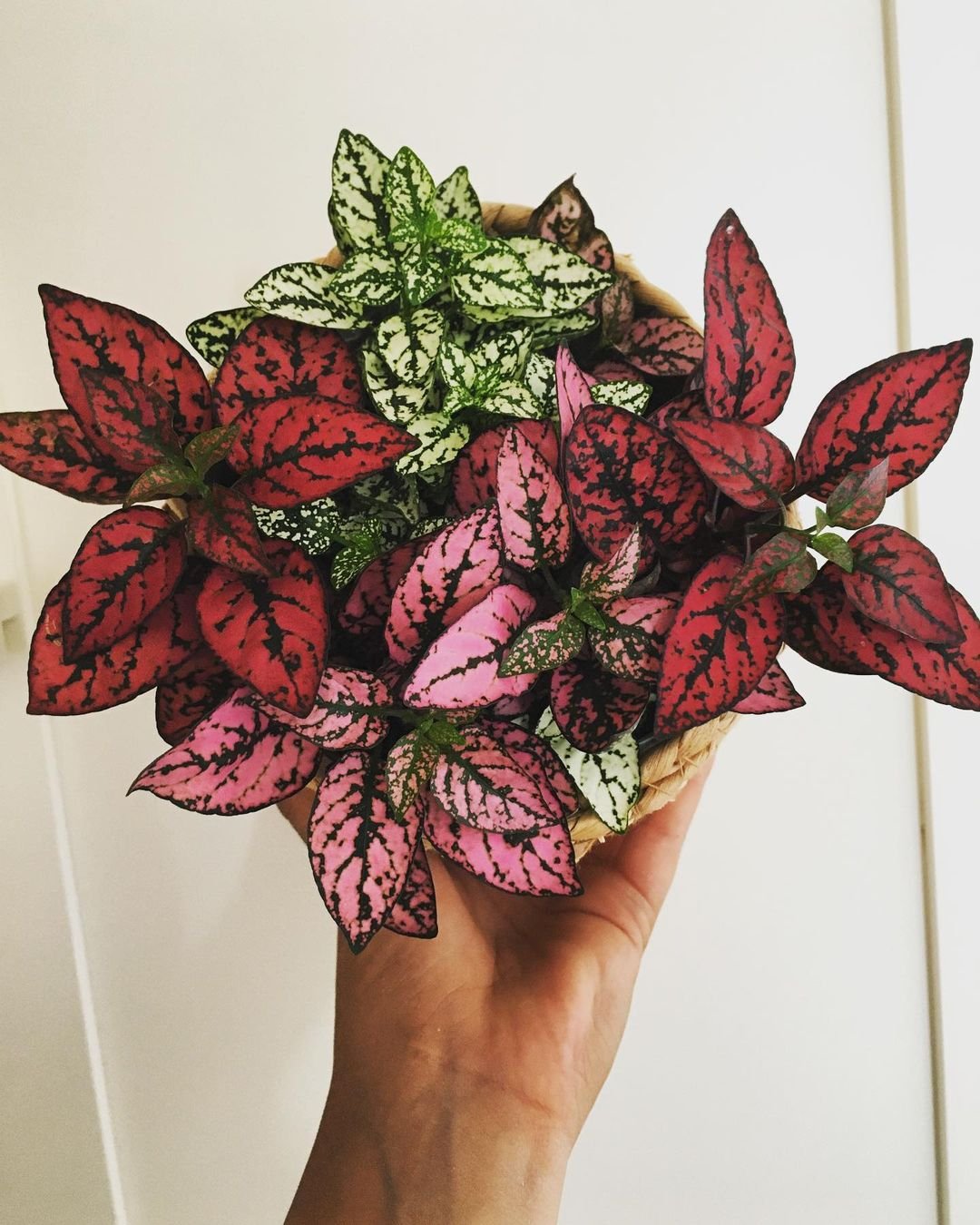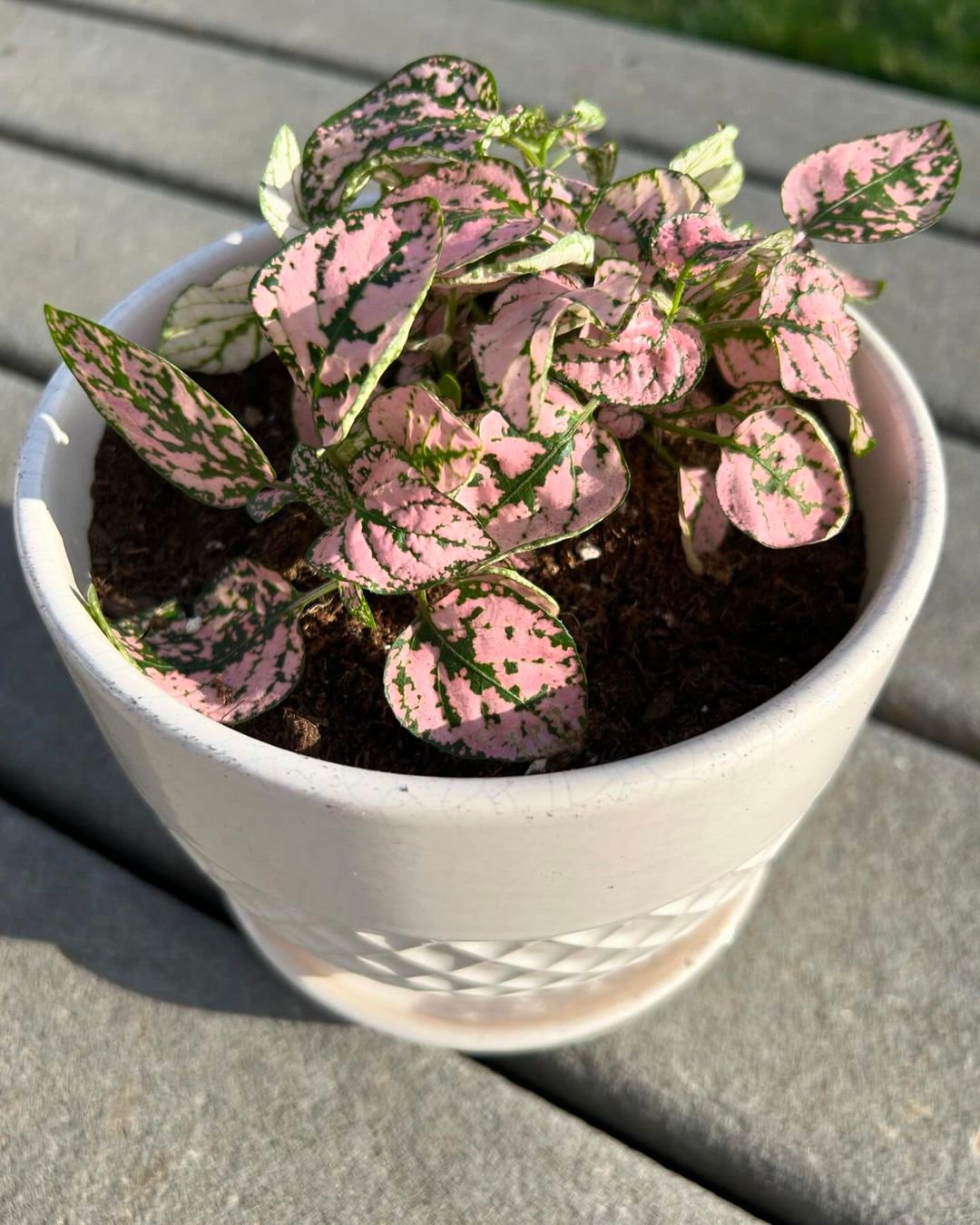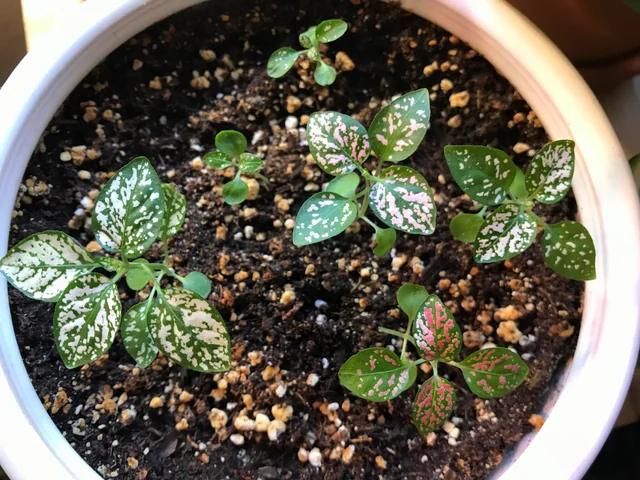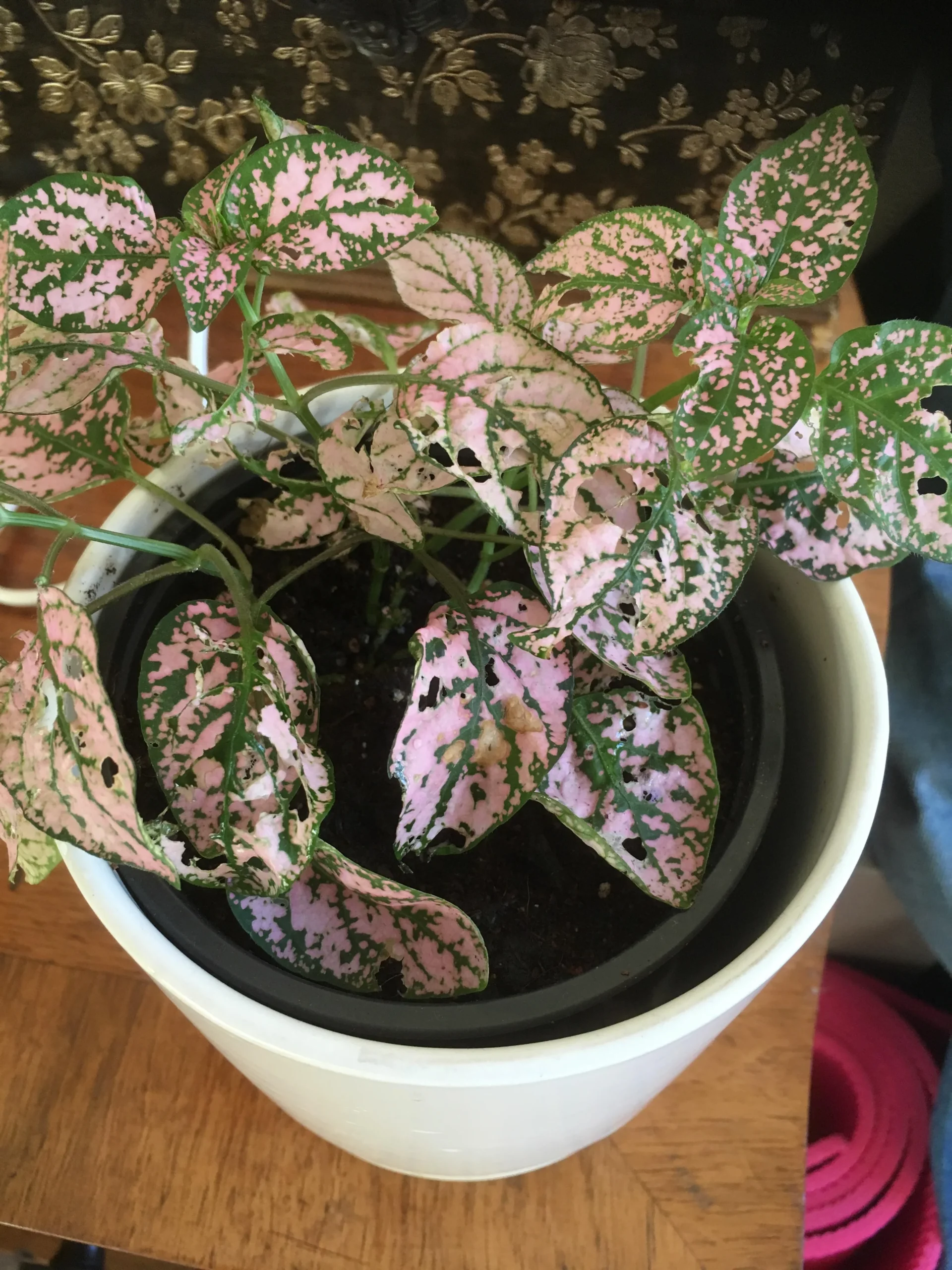Polka dot plants (Hypoestes phyllostachya) are a delightful addition to any garden or indoor space. With their charming multi-color patterns, these plants add a vibrant touch to your surroundings.
Polka dot plants – In this comprehensive guide, we will delve into the various aspects of polka dot plant care, ensuring that you can nurture these plants to their full potential.

Plant Attributes
Here’s a short information chart for the Polka Dot Plant:
| Common Names | Polka Dot Plant, Freckle Face Plant |
|---|---|
| Botanical Name | Hypoestes phyllostachya |
| Family | Acanthaceae |
| Plant Type | Herbaceous perennial |
| Mature Size | 6-12 inches tall |
| Sun Exposure | Bright, indirect light to partial shade |
| Soil Type | Well-draining, moist potting mix |
| Bloom Time | Rarely flowers |
| Flower Color | Inconspicuous, white to pale pink |
| Hardiness Zones | USDA zones 10-11 |
| Native Area | Madagascar |
The Polka Dot Plant is prized for its colorful foliage, featuring vibrant splashes of pink, red, or white on green leaves, resembling polka dots. It’s commonly grown as a houseplant or annual outdoor plant in gardens and containers, adding a playful touch to indoor and outdoor spaces.
Polka Dot Plant Care
Light Requirements

When cultivating polka dot plants in the South, optimal light conditions are crucial. Avoid full sun, as it may lead to foliage burn. Instead, aim for dappled shade or morning sun. The amount of sunlight required also varies with geographical location, with more direct sun suitable for northern regions.
Indoors, place your polka dot plant in bright, indirect light near a window or by an eastern-facing window for a touch of morning sun.
Soil Considerations

Polka dot plants thrive in organically rich, well-drained, slightly acidic soil. For containers, choose potting soil with peat or compost for organic matter and perlite or pumice for proper drainage. In flower beds, crumbly, fertile soil with added peat for lightening heavy soils and compost for nutrients is ideal.
Watering Guidelines
Maintain moderately moist soil to prevent wilting and leaf drop. If wilting occurs, a good watering usually restores vitality. Container plants benefit from slightly moist conditions, avoiding saturation. Water when the top 1/2 inch of soil is dry. Adjust watering for houseplants during winter, reducing slightly.
Temperature And Humidity
Polka dot plants thrive in humid conditions, making them suitable for summer outdoors. They can endure temperatures as low as 50°F but prefer growth initiation at 60°F or higher. Pinching back stems extends their life. In low humidity environments, occasional misting aids plant health.
Fertilization

Feed container plants monthly with water-soluble houseplant fertilizer during the warm growing season. Bedding plants benefit from a fresh layer of compost each spring.
Types Of Polka Dot Plants

The polka dot plant offers various leaf colorations. The most popular display pink and green speckles, while others have green foliage with deep red or cream accents. Notable series include Splash Select™ with rosy red, white, or bubblegum pink leaves, and the Proven Winners Hippo® series with green foliage featuring rose, scarlet red, and white dots.
Propagating Polka Dot Plant
While polka dot plants might not be long-lived, they are easily propagated. Cuttings can be rooted in water or directly in soil. Follow these steps:
- Cut a four-inch stem section.
- Remove leaves from the bottom half.
- Optionally root in water, then transplant.
- Keep soil moist and provide bright, indirect light.
How To Grow Polka Dot Plant From Seed

Growing polka dot plants from seed is a rewarding experience. Follow these steps:
- Fill a small pot with moist potting mix.
- Press seeds into the mix, leaving them exposed to light.
- Cover with plastic and place in bright, indirect light.
- Remove plastic after germination, keeping soil moderately moist.
- Harden off before moving outdoors.
Potting And Repotting Polka Dot Plant
Polka dot plants are often container-grown. Choose a mix with peat or compost for organic matter and perlite or pumice for drainage. Repot when roots emerge from the bottom. Select a larger container, about two inches wider, and ensure proper watering.
Overwintering
If bringing your polka dot plant indoors for winter, do so before nighttime temperatures drop. Gradually acclimate to lower light, spray with insecticidal soap, and place near a bright window. Maintain slightly dry soil, bringing the plant back outdoors when temperatures exceed 50°F.
Common Pests & Plant Diseases

While generally easy to grow, polka dot plants may face issues like scale, flies, aphids, root rot, and powdery mildew. Vigilance is key, and treatments include horticultural oil, insecticidal soap, and neem oil for control.
Common Problems With Polka Dot Plant
Color Fading Or Disappearing
Diminished leaf coloration may result from insufficient sunlight. Move plants to a brighter spot if too shady, or provide more shade if leaves bleach and brown at the edges.
Leaves Falling Off
Excessive leaf shedding indicates potential issues. Crispy, brown leaves suggest underwatering, while soft, yellow leaves indicate overwatering or disease. Adjust watering and replant as needed.
In conclusion, mastering the art of cultivating polka dot plants involves understanding their specific needs. By following these guidelines, you’ll ensure vibrant, healthy plants that enhance your garden or indoor space.
Pingback: 10 Japanese Indoor Plants: Enhancing Your Home with Greenery
Pingback: When and How to Cut Back Peonies for Gorgeous Blooms
Pingback: Anthurium Besseae: How to Grow & Care - Gardener's School
Pingback: 15 Pink Houseplants To Add A Pop of Color To Your Home - Gardener's School